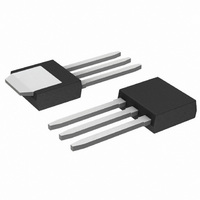VN1160C-1-E STMicroelectronics, VN1160C-1-E Datasheet - Page 58

VN1160C-1-E
Manufacturer Part Number
VN1160C-1-E
Description
IC OFF-LINE CONVERTER 60V IPAK
Manufacturer
STMicroelectronics
Datasheet
1.STD30NF04LT.pdf
(60 pages)
Specifications of VN1160C-1-E
Voltage - Input
9 ~ 40 V
Package / Case
TO-251-3 Long Leads, IPak, TO-251AB
Lead Free Status / RoHS Status
Lead free / RoHS Compliant
Available stocks
Company
Part Number
Manufacturer
Quantity
Price
Key criteria for automotive grade qualification
• Compliance with AEC Q100 guidelines for ICs and Q101 guidelines for discrete products
• Compliance with AEC Q003 guidelines for product characterization (ICs only)
• Compliance with safe production parts approval process (PPAP)
• Compliance with AEC Q001 and Q002 guidelines for statistical yield analysis (SYA) and part average testing (PAT) at electrical wafers sort (EWS)
• Implementation of specific screening and test methods during manufacturing process
AEC Q100 and Q101 guidelines for product
qualification
ST has its own internal qualification procedures and checks
to ensure that quality and reliability of products meet the test
conditions defined in AEC Q100 and Q101 guidelines.
For older products already qualified, ST uses customer, field and
generic data to ensure that the products meet the quality and
reliability standards.
AEC Q003 guidelines for product characterization
Characterization is extremely important during the development
of a new IC or the modification of an existing IC. ST has its
own internal characterization procedures following AEC Q003
guidelines for the characterization procedure. For older products
already qualified, ST uses generic characterization data to
ensure that the products fulfil the characterization standards.
Safe production parts approval process (PPAP)
ST guarantees the availability of all documents related to the
qualification and manufacturing of its products. These PPAP
documents are available to support the customer production
approval process and the associated risk assessment.
Statistical yield analysis (SYA) and part average
testing (PAT) at electrical wafers sort (EWS)
For automotive grade products, ST has introduced specific
methods to eliminate abnormal lots and outlier products.
In the AEC Q002 guidelines, SYA is divided into statistical yield
limits (SYL) and statistical bin limit, (SBL). These methods allow
the detection of abnormal lots of material, ensuring quality
and reliability of final products. In the AEC Q001 guidelines,
it is recommended that PAT is applied to product testing.
PAT is a statistical method for detecting semiconductor parts
with abnormal characteristics (outliers), thus ensuring quality
and reliability of products. ST implements both guidelines for
automotive grade products and applies not only static PAT as
required in the Q001 but also dynamic PAT and geographic PAT.
Product screening methods
For automotive grade products, ST has introduced improved
stress testing and screening methodologies, using the screening
results for product improvement actions targeting a zero defect
level for our automotive grade products. These methods are
intended to eliminate products, considered good by the standard
production test, but presenting a risk of failure induced by the
specific conditions of automotive applications. For optimum
effectiveness, these methods are product-family and technology
dependent. A matrix relating methods to product families and
technologies is available on the ST website.
58
Automotive grade qualification
Automotive grade products comply with all automotive
grade qualification criteria and meet the automotive industry
requirements. A product is not automotive grade simply because
its functionality fits with a customer’s automotive application.
Automotive grade products must be validated and qualified for
the application, according to the specification defined by the
customers.
A clear roadmap for automotive grade
qualification
If a product has been developed for, or adapted to, automotive
applications, but has not yet achieved automotive grade
qualification, advance documentation will specify ST plans
to ensure that such products meet automotive grade criteria
within a clearly defined timeframe. The local STMicroelectronics
sales office is available for information on the qualification
processes.
If a product developed by ST for non-automotive applications is
of interest to the automotive market, a request for automotive
grade qualification can be made to the local STMicroelectronics
sales office. If the product is able to meet automotive grade
criteria, it could qualify as an automotive grade product and
could be supplied with in a specific lead-time.














